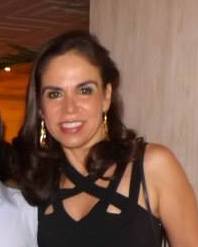Eating People is Wrong
I picked this title from Goodreads‘ weird book titles. By the way, the title above is from a book by English author and academic Malcom Bradbury (1932-2000), whom I have never read and whose book I am now curious about. The reason why I picked a random title for my post was because I wanted to illustrate it with a simple task that fosters collaborative creative writing. I like creative writing tasks because they follow a very important principle that allows language to emerge in a real communicative context: writers’ need to create a world that others understand. Think about J.K. Rowling and the world she created in the Harry Potter series. She conceived every single detail of Hogwarts School of Witchcraft and Wizardry based on her previous experiences and imagination, but ultimately it is the language used to describe it that conveys everything we know about the muggles, the sorting hats, and Quidditch. She would not have spent more than a couple of sentences explaining football rules to her British readers. However, as far as I know, an entire booklet was written solely to explain the intricate rules of Quidditch.
Thornbury (2005) observes that ‘the greater the distance, the more grammar.’ Creating one’s imaginary world requires more words and more grammar to express one’s exact ideas. The schema-gap between authors and readers can turn grammar into a truly communicative tool that brings meaning into discourse. In short, the students themselves must draw on their knowledge of vocabulary and grammar to build an entirely new context and convey its exact meaning to their readers. When students share their texts, it is possible to create a real audience and consequently provide a real short-term goal for writers and readers alike: writing for a real audience and reading real authors. It is sort of a walk-through, or in other words, it is about learners scaffolding each other through language. Last but not least, creative writing is fun and its outcome can be totally unpredictable, which is guaranteed to foster curiosity in even the most reluctant writers and readers.
So, here’s a simple idea that allows for variations if you need to adapt it to your teaching context:Level: Intermediate and above (teenagers and adults)
Time: 60 minutes
Online Resources: https://www.goodreads.com/topic/show/156122-crazy-hilarious-interesting-ridiculously-weird-book-titles
https://www.amazon.com/Eating-People-Wrong-Malcolm-Bradbury/dp/0897331893
Before the lesson: Read a few blurbs and look for elements that make them appealing to readers.
Step 1: Present the following lexical set: blurb, back cover, jacket, fiction, non-fiction, plot. Show the blurb and discuss its promotional purpose and its content (plot summary, author’s brief biography, author’s picture, and other elements that lure readers into wanting to buy this book.
Step 2: Select a few titles from the Goodreads page and write them on the board. Students vote for the weirdest title and think about a plot for it.
Step 3: Students work in small groups and write a blurb for the title they have chosen. (word count: 200-250 words)
Step 4: Groups swap blurbs and decide on which book they would like to read. They should justify their choices and provide feedback regarding style, content, and its pragmatic features.
Step 5: Google the title and compare the blurbs with the original blurb.




